Microsoft, an American multinational technology corporation headquartered in Redmond, Washington, was founded in 1975. It gained prominence with its Windows operating system, playing a significant role in the rise of personal computers. Over time, Microsoft has diversified into internet services, cloud computing, video gaming, and more. It is recognized as the world's largest software vendor, one of the most valuable publicly traded companies in the U.S., and a leading global brand.
1972: Founding of Traf-O-Data
In 1972, Bill Gates and Paul Allen founded Traf-O-Data, a company that sold a rudimentary computer to track and analyze automobile traffic data.
January 1975: Inspiration from Altair 8800
In January 1975, the issue of Popular Electronics featured the MITS Altair 8800 microcomputer, which inspired Allen to suggest that they could program a BASIC interpreter for the device.
March 1975: Demonstration of BASIC Interpreter
In March 1975, Gates and Allen demonstrated a BASIC interpreter to MITS in Albuquerque, New Mexico, and it worked flawlessly. MITS agreed to distribute it, marketing it as Altair BASIC.
April 4, 1975: Establishment of Microsoft
On April 4, 1975, Bill Gates and Paul Allen established Microsoft, with Gates as CEO. Allen suggested the name "Micro-Soft", short for micro-computer software.
1975: Microsoft Corporation Founded
In 1975, Microsoft Corporation, an American multinational corporation and technology conglomerate, was founded and later became highly influential in the rise of personal computers.
1975: Foundation of Microsoft
Microsoft was founded in 1975, and by 2030, the company aims to remove all carbon it has emitted since its foundation.
August 1977: First International Office
In August 1977, Microsoft formed an agreement with ASCII Magazine in Japan, resulting in its first international office, ASCII Microsoft.
January 1979: Microsoft Headquarters Moved
In January 1979, Microsoft moved its headquarters to Bellevue, Washington.
November 1980: Contract with IBM and Acquisition of 86-DOS
In November 1980, IBM awarded a contract to Microsoft to provide a version of the CP/M OS for the IBM Personal Computer (IBM PC). Microsoft purchased a CP/M clone called 86-DOS from Seattle Computer Products, which it branded as MS-DOS.
1980: MS-DOS Release
In 1980, Microsoft rose to dominate the personal computer operating system market with MS-DOS.
1980: Steve Ballmer joins Microsoft.
In 1980, Steve Ballmer joined Microsoft as an employee of the company.
August 1981: Release of IBM PC with MS-DOS
In August 1981, the IBM PC was released with MS-DOS, which IBM rebranded as IBM PC DOS. Microsoft retained ownership of MS-DOS, eventually becoming the leading PC operating systems vendor.
1981: Occupation of Mountain View Campus
Microsoft has occupied its Mountain View, California, campus since 1981.
1983: Release of Microsoft Mouse and Microsoft Press
In 1983, Microsoft expanded into new markets with the release of the Microsoft Mouse and established a publishing division named Microsoft Press. Paul Allen also resigned from Microsoft in 1983 after developing Hodgkin's lymphoma.
1983: Original Microsoft Mouse
Microsoft had original hardware commitments from Microsoft following its original Microsoft Mouse in 1983
November 20, 1985: Release of Windows 1.0
On November 20, 1985, Microsoft released Windows 1.0 as a graphical extension for MS-DOS.
1985: Establishment of Microsoft Canada
In 1985, Microsoft established Microsoft Canada as a subsidiary.
February 26, 1986: Headquarters Move to Redmond and Public Offering
On February 26, 1986, Microsoft moved its headquarters from Bellevue to Redmond, Washington.
1986: InFocus Corporation Logo Adaptation
In 1986, InFocus Corporation adapted its logo, which was similar to Microsoft's "Pac-Man Logo" that was adopted a year later in 1987.
1986: Microsoft IPO
In 1986, Microsoft had its initial public offering (IPO), which led to a rise in its share price, creating three billionaires and an estimated 12,000 millionaires among Microsoft employees.
1986: Microsoft's Initial Public Offering (IPO)
In 1986, Microsoft launched its initial public offering (IPO) with an opening stock price of $21, closing the trading day at $27.75.
February 26, 1987: Pac-Man Logo Adopted
On February 26, 1987, Microsoft adopted the "Pac-Man Logo", designed by Scott Baker, with the concept being similar to InFocus Corporation logo that was adapted a year earlier in 1986.
April 2, 1987: Release of OS/2 to OEMs
On April 2, 1987, Microsoft released its version of OS/2 to original equipment manufacturers (OEMs).
1988: Start of Per Processor Licenses
In 1988, Microsoft began inducing many OEMs to execute anti-competitive 'per processor licenses.
1989: "Velvet Sweatshop" Term Originated
The term "Velvet Sweatshop" originated in a 1989 Seattle Times article, and later became used to describe the company by some of Microsoft's own employees, referring to the perception that Microsoft provides nearly everything for its employees but overworks them.
1990: Introduction of Microsoft Office Suite and launch of Windows 3.0
In 1990, Microsoft introduced the Microsoft Office suite, which included applications like Microsoft Word and Microsoft Excel. Also, Microsoft launched Windows 3.0 featuring streamlined user interface graphics and improved protected mode capability.
1990: Federal Trade Commission Examination
In 1990, the Federal Trade Commission examined Microsoft for possible collusion due to the partnership with IBM, marking the beginning of legal clashes with the government.
July 21, 1993: Release of Microsoft Windows NT
On July 21, 1993, Microsoft Windows NT was released, featuring a new modular kernel and the 32-bit Win32 application programming interface (API).
July 15, 1994: End Date of Per Processor Licenses
On July 15, 1994, Microsoft ended the anti-competitive 'per processor licenses', where OEMs paid Microsoft a royalty for each computer sold containing a particular microprocessor, whether the computer used a Microsoft operating system or not.
July 27, 1994: Department of Justice Files Competitive Impact Statement
On July 27, 1994, the Department of Justice's Antitrust Division filed a competitive impact statement regarding Microsoft's anti-competitive 'per processor licenses' induced since 1988.
May 26, 1995: Bill Gates's Internet Tidal Wave Memo
On May 26, 1995, following Bill Gates's internal "Internet Tidal Wave memo", Microsoft began redefining its offerings and expanding its product line into computer networking and the World Wide Web.
August 24, 1995: Release of Windows 95
On August 24, 1995, Microsoft released Windows 95, featuring pre-emptive multitasking, a completely new user interface, and 32-bit compatibility. It came bundled with MSN and Internet Explorer.
October 1997: Justice Department Files Motion Regarding Internet Explorer Bundling
In October 1997, the Justice Department filed a motion in the Federal District Court, stating that Microsoft violated an agreement signed in 1994 by bundling Internet Explorer with Windows and asked the court to stop the bundling.
1998: German Employees Elect Works Councils
Since 1998, German employees have elected works councils.
October 1999: Formation of Trusted Computing Platform Alliance
In October 1999, Microsoft and other companies formed the Trusted Computing Platform Alliance to increase security and protect intellectual property, which was criticized for potentially restricting consumer software use.
1999: Stock Price Peak
In 1999, Microsoft's stock price peaked at around $119 ($60.928, adjusting for splits).
January 13, 2000: Steve Ballmer Becomes CEO
On January 13, 2000, Bill Gates handed over the CEO position to Steve Ballmer, becoming Chief Software Architect instead.
April 3, 2000: Judgment in United States v. Microsoft Corp.
On April 3, 2000, a judgment was handed down in the case of United States v. Microsoft Corp., calling the company an "abusive monopoly."
2000: Forbes Global Ranking
According to Forbes Global 2000 Microsoft was the world's largest software maker by revenue in 2022.
2000: Steve Ballmer replaces Bill Gates as CEO
In 2000, Steve Ballmer replaced Bill Gates as CEO of Microsoft.
2000: Stock Price Peak
In early 2000, the stock price hit $50.04 a share, the highest since early 2000.
2000: Largest Stock Sell-Off Since 2000
On July 19, 2013, Microsoft stocks suffered their biggest one-day percentage sell-off since the year 2000.
October 25, 2001: Release of Windows XP
On October 25, 2001, Microsoft released Windows XP, unifying the mainstream and NT lines of OS under the NT codebase.
2001: Ballmer Calls Linux "Cancer"
In 2001, then-CEO Steve Ballmer famously called Linux "cancer", in contrast to Microsoft joining the Linux Foundation in 2016.
2002: New Logo and Slogan Debut in the US
In 2002, Microsoft started using the logo with the tagline "Your potential. Our passion." in the United States and eventually started a television campaign with the slogan, changed from the previous tagline of "Where do you want to go today?".
2002: Human Rights Campaign Index Rating
In 2002, The Human Rights Campaign Corporate Equality Index rated Microsoft at 87%.
January 16, 2003: Microsoft Begins Offering Dividends
On January 16, 2003, Microsoft began offering a dividend, starting at eight cents per share for the fiscal year.
2003: Windows Server 2003 TCO
In 2003, research firms compared the total cost of ownership (TCO) of Windows Server 2003 to Linux.
March 2004: Antitrust Action by the European Union
In March 2004, the European Union brought antitrust legal action against Microsoft for abusing its dominance with the Windows OS, resulting in a judgment of €497 million and requiring Microsoft to produce new versions of Windows XP without Windows Media Player.
March 2004: Lack of compliance with judgment of March 2004
On February 27, 2008, the European Union imposed another fine of €899 million on Microsoft for its lack of compliance with the March 2004 judgment, regarding unreasonable pricing for key information about its workgroup and backoffice servers.
April 2004: Channel 9 Launched
In April 2004, Microsoft launched Channel 9, a community site for developers and users, which features a wiki and an Internet forum.
2004: TCO Comparison Studies
In 2004, Microsoft commissioned research firms to compare the total cost of ownership (TCO) of Windows Server 2003 to Linux.
2004: Settlement with the U.S. Department of Justice
In 2004, Microsoft settled with the U.S. Department of Justice after being called an abusive monopoly in 2000.
2004: Human Rights Campaign Index Rating
In 2004, The Human Rights Campaign Corporate Equality Index rated Microsoft at 87%.
April 2005: Solar Panels Installed
In April 2005, Microsoft installed over 2,000 solar panels on its Silicon Valley campus buildings, generating about 15% of the total energy needed by the facilities.
November 2005: Release of Xbox 360
In November 2005, Microsoft's second video game console, the Xbox 360, was released in two versions: a basic version for $299.99 and a deluxe version for $399.99.
2005: Bill Gates on H1B Visas
In 2005, Bill Gates expressed his opposition to the cap on H-1B visas, claiming it makes it difficult for Microsoft to hire employees.
2005: Switch to Quarterly Dividends
In 2005, Microsoft switched from yearly to quarterly dividends with eight cents a share per quarter and a special one-time payout of three dollars per share for the second quarter of the fiscal year.
2005: Human Rights Campaign Index Rating
In 2005, The Human Rights Campaign Corporate Equality Index rated Microsoft at 100% after they allowed gender expression.
March 3, 2006: On10.net Launched
On March 3, 2006, Microsoft launched On10.net, a community site offering daily videocasts and other services.
June 2006: Gates' Retirement Announced
In June 2006, Bill Gates announced his decision to retire from his role as Chief Software Architect, effective June 27, 2008.
2006: Release of Zune Series
In 2006, Microsoft released the Zune series of digital media players, a successor to its previous software platform Portable Media Center.
2006: Online Services Division Losses
Since 2006, Microsoft's Online Services Division has been continuously loss-making.
January 2007: Release of Windows Vista and Office 2007
In January 2007, Microsoft released Windows Vista, focused on features, security, and a redesigned user interface, and Microsoft Office 2007, featuring the "Ribbon" user interface.
2007: Microsoft Joined PRISM Program
According to leaks of said program, Microsoft joined the PRISM program in 2007.
2007: Market Leadership in Peripherals
As of 2007, Microsoft sold the best-selling wired keyboard (Natural Ergonomic Keyboard 4000), mouse (IntelliMouse), and desktop webcam (LifeCam) in the United States. Also, in 2007 the company launched the Surface "digital table", later renamed PixelSense.
2007: Acquisition of aQuantive
In 2007, Microsoft acquired the advertising company aQuantive for $6.2 billion.
February 27, 2008: European Union Fines Microsoft for Non-Compliance
On February 27, 2008, the European Union imposed another fine of €899 million on Microsoft for its lack of compliance with the March 2004 judgment, regarding unreasonable pricing for key information about its workgroup and backoffice servers.
June 27, 2008: Gates Retires as Chief Software Architect
On June 27, 2008, Bill Gates retired from his role as Chief Software Architect, while retaining other positions related to the company and becoming an advisor on key projects.
October 27, 2008: Azure Services Platform Launch
On October 27, 2008, Microsoft launched Azure Services Platform for Windows, marking the company's entry into the cloud computing market.
2008: "Your potential. Our passion." Slogan
In 2008, Microsoft based its logo with the tagline "Your potential. Our passion." on a slogan it used that year.
2008: LEED Silver Certification
In 2008, Microsoft's main U.S. campus received a silver certification from the Leadership in Energy and Environmental Design (LEED) program.
2008: Great Recession
In 2009, Microsoft had eliminated 5,800 jobs in line with the Great Recession of 2008–2017.
February 12, 2009: Microsoft Retail Store Announcement
On February 12, 2009, Microsoft announced its intention to open a chain of Microsoft-branded retail stores.
October 22, 2009: Microsoft Store Opening and Windows 7 Release
On October 22, 2009, the first retail Microsoft Store opened in Scottsdale, Arizona, and Windows 7 was officially released to the public. Windows 7 focused on ease-of-use and performance enhancements.
2009: Search for Flagship Store
As of 2015, company executives mention that Microsoft had been on the lookout for a flagship retail location since 2009.
2009: Microsoft Eliminated Jobs
In 2009, Microsoft had eliminated 5,800 jobs in line with the Great Recession of 2008–2017.
2009: London Stock Exchange to Drop Microsoft Solution
In 2009, the London Stock Exchange announced it was planning to drop its Microsoft solution and switch to a Linux-based one in 2010 after experiencing extended downtime and unreliability.
February 2010: Microsoft Stance on Public Transport
In February 2010, Microsoft opposed adding additional public transport and high-occupancy vehicle (HOV) lanes to State Route 520 due to concerns about construction delays.
July 2010: Stock Splits Update
As of July 2010, the company's nine stock splits, any IPO shares would be multiplied by 288.
November 2010: Kinect Introduction
In November 2010, Microsoft introduced the Kinect, a motion-sensing input device designed as a video game controller.
2010: Switch to Linux-based solution
In 2010, London Stock Exchange switched to Linux-based solution.
2010: Windows Phone OS Release
In 2010, Microsoft revamped its mobile operating system, replacing Windows Mobile with the new Windows Phone OS.
2010: "Be What's Next" Tagline Unveiled
In 2010, Microsoft unveiled the company's next tagline, "Be What's Next," during the private MGX conference. They also had a slogan/tagline "Making it all make sense."
2010: Online Services Division Loss
In 2010, Microsoft's Online Services Division experienced a loss of $2.5 billion.
2010: Human Rights Campaign Index Rating
In 2010, The Human Rights Campaign Corporate Equality Index rated Microsoft at 100%.
January 2011: Greenpeace Greener Electronics Guide
As of January 2011, Microsoft had no products that were completely free from PVC and BFRs, according to Greenpeace's Guide to Greener Electronics.
February 2011: Microsoft Releases Corporate Bond
In February 2011, Microsoft released a corporate bond amounting to $2.25 billion with relatively low borrowing rates.
March 23, 2011: Microsoft Founding Member of Open Networking Foundation
On March 23, 2011, Microsoft became a founding member of the Open Networking Foundation, which supports a cloud computing initiative called Software-Defined Networking.
June 2011: Windows 8 Unveiling
In June 2011, Microsoft unveiled Windows 8 in Taipei, an operating system designed for both personal and tablet computers.
2011: Greenpeace Report on Cloud Computing
In 2011, Greenpeace released a report evaluating the top ten big brands in cloud computing on their electricity sources, raising concerns about the environmental impact of data centers.
2011: Kinect Camera System Patent Application
In 2011, Microsoft filed a patent application suggesting the potential use of the Kinect camera system to monitor television viewers' behavior for a more interactive viewing experience.
2011: World's Best Multinational Workplaces
In 2011, Microsoft was ranked number 1 in the list of the World's Best Multinational Workplaces by the Great Place to Work Institute.
2011: Acquisition of Skype Technologies
In 2011, under Steve Ballmer's leadership, Microsoft acquired Skype Technologies, marking the then-largest of Microsoft's corporate acquisitions.
February 29, 2012: Windows 8 Consumer Preview Release
On February 29, 2012, Microsoft released the consumer preview of Windows 8.
July 20, 2012: Microsoft Posts First Quarterly Loss
On July 20, 2012, Microsoft posted its first quarterly loss ever, with a net loss of $492 million due to a writedown related to the advertising company aQuantive, which had been acquired for $6.2 billion back in 2007.
August 2012: Partnership with NYPD for Domain Awareness System
In August 2012, the New York City Police Department partnered with Microsoft for the development of the Domain Awareness System, used for police surveillance.
August 23, 2012: End of the Pac-Man Logo
On August 23, 2012, Microsoft's Pac-Man logo use ended after 25 years, 5 months, and 28 days, becoming the longest enduring logo used by the company.
September 4, 2012: Windows Server 2012 Release
On September 4, 2012, Microsoft released Windows Server 2012.
October 26, 2012: Windows 8 and Microsoft Surface Launch
On October 26, 2012, Microsoft launched Windows 8 and the Microsoft Surface.

2012: Introduction of Surface PC Line
In 2012, Microsoft increased its focus on hardware and introduced its first in-house PC line, the Surface.
2012: "Scroogled" Ad Campaign
In 2012, Microsoft launched the "Scroogled" advertising campaign, targeting Google and alleging biased search results and privacy violations.
2012: Timeline for Phasing out Toxic Materials
In 2012, Microsoft's timeline for phasing out brominated flame retardants (BFRs) and phthalates in all products was set but its commitment to phasing out PVC was not clear.
March 29, 2013: Patent Tracker Launch
On March 29, 2013, Microsoft launched a Patent Tracker.
May 2013: Microsoft Identified as Participant in PRISM Program
Following media reports about PRISM, NSA's massive electronic surveillance program, in May 2013, Microsoft was identified as one of the participating technology companies.
May 2013: Kinect Upgrades Revealed
In May 2013, the upgraded Kinect capabilities for the Xbox One were revealed, including an ultra-wide 1080p camera, infrared sensor for dark function, higher-end processing power, and the ability to distinguish fine movements.
June 2013: Microsoft Denies Participation in PRISM
In June 2013, Microsoft issued an official statement denying their participation in the PRISM program.
June 2013: Microsoft Participates in PRISM Surveillance Program
In June 2013, leaked NSA documents revealed that Microsoft was the first company to participate in the PRISM surveillance program. This program allows the government to secretly access data of non-US citizens hosted by American companies without a warrant. Microsoft has denied participation in such a program.
July 2013: Business Reorganization Announcement
In July 2013, Microsoft announced a business reorganization into four new divisions: Operating Systems, Apps, Cloud, and Devices.
July 19, 2013: Stock Sell-Off After Poor Windows 8 and Surface Showings
On July 19, 2013, Microsoft stocks experienced their largest one-day percentage sell-off since 2000, following a fourth-quarter report raising concerns about the poor performance of Windows 8 and the Surface tablet, resulting in a loss of over $32 billion.

September 3, 2013: Acquisition of Nokia's Mobile Unit
On September 3, 2013, Microsoft agreed to buy Nokia's mobile unit for $7 billion.
December 2013: Microsoft Emphasizes Customer Privacy
In December 2013, Microsoft emphasized its commitment to customer privacy and data protection, viewing government snooping as an 'advanced persistent threat'.
2013: Microsoft to Buy Texas Wind Power
In 2013, Microsoft agreed to purchase power generated by a wind project in Texas to power one of its data centers.
January 2014: Market Capitalization
As of January 2014, Microsoft's market capitalization stood at $314B, making it the 8th-largest company in the world by market capitalization.
February 4, 2014: Satya Nadella Appointed CEO
On February 4, 2014, Satya Nadella succeeded Steve Ballmer as CEO of Microsoft, and John W. Thompson became chairman, replacing Bill Gates.
April 25, 2014: Acquisition of Nokia Devices and Services
On April 25, 2014, Microsoft acquired Nokia Devices and Services for $7.2 billion, renaming it Microsoft Mobile Oy.
June 5, 2014: Microsoft Employee Count
As of June 5, 2014, Microsoft employed 127,104 people.
July 1, 2014: Opening of First Microsoft Transparency Center
On July 1, 2014, Microsoft opened its first Transparency Center, providing participating governments the ability to review source code for key products.
July 2014: Microsoft Announces Layoffs
In July 2014, Microsoft announced plans to lay off 18,000 employees, representing about a 14 percent reduction of its workforce.
September 15, 2014: Acquisition of Mojang
On September 15, 2014, Microsoft acquired the video game development company Mojang, best known for Minecraft, for $2.5 billion.
September 2014: Second Wave of Layoffs
In September 2014, Microsoft laid off 2,100 people, including 747 in the Seattle–Redmond area, as part of a second wave of previously announced layoffs.
October 2014: Microsoft Completes Major Layoff Sweep
In October 2014, Microsoft revealed that it was almost done with eliminating 18,000 employees, its largest-ever layoff sweep.
November 14, 2014: Microsoft Overtakes ExxonMobil
On November 14, 2014, Microsoft overtook ExxonMobil to become the second most-valuable company by market capitalization, behind only Apple Inc.
2014: Phil Spencer Appointed Head of Xbox
In 2014, Phil Spencer was appointed as the head of the Xbox brand, a position he held until the acquisition of Activision Blizzard when he became the CEO of Microsoft Gaming.
2014: Satya Nadella becomes CEO
In 2014, Satya Nadella took over as CEO of Microsoft, shifting the company's focus towards cloud computing.
2014: All-Renewable Energy Use
In 2021, Microsoft was awarded the EPA's Green Power Leadership Award, citing the company's all-renewable energy use since 2014.
January 21, 2015: Microsoft Surface Hub Announcement
On January 21, 2015, Microsoft announced the release of their first Interactive whiteboard, Microsoft Surface Hub.
July 2015: Microsoft Announces Additional Job Cuts
In July 2015, Microsoft announced another 7,800 job cuts in the next several months.
July 29, 2015: Windows 10 Release
On July 29, 2015, Windows 10 was released.
October 26, 2015: Retail Location Opened on Fifth Avenue
On October 26, 2015, Microsoft opened its retail location on Fifth Avenue in New York City. The store opening coincided with the launch of the Surface Book and Surface Pro 4.
November 12, 2015: Flagship Store Opened in Sydney
On November 12, 2015, Microsoft opened a second flagship store, located in Sydney's Pitt Street Mall.
2015: Jesse Jackson Praises Microsoft for Appointing Two Women to Board
In 2015, Jesse Jackson praised Microsoft for appointing two women to its board of directors, highlighting the company's efforts in diversity and inclusion.
2015: Microsoft Philanthropies Established
In 2015, Microsoft Philanthropies was established to bring the benefits of technology to underserved populations, focusing on donating cloud resources, expanding broadband access, funding computer science education, and supporting child and refugee relief.
2015: Parental Leave Policy Established and Paid Leave Requirement
In 2015, Microsoft established its own parental leave policy to allow 12 weeks off for parental leave with an additional 8 weeks for the parent who gave birth and required subcontractors to provide 15 days of paid vacation and sick leave each year.
2015: Jersey Sponsor of Finland's Basketball Team
In 2015, Microsoft was the official jersey sponsor of Finland's national basketball team at EuroBasket 2015.
2015: Untaxed Earnings
In 2015, Reuters reported that Microsoft Corp had earnings abroad of $76.4 billion which were untaxed by the Internal Revenue Service.
2015: Destruction of Historic Cemetery
In 2015, the construction of a data center in Mecklenburg County, Virginia, led to the destruction of a historic African American cemetery.
January 2016: US Smartphone Market Share
In January 2016, Microsoft's share of the U.S. smartphone market was 2.7%.
March 1, 2016: Merger of PC and Xbox Divisions
On March 1, 2016, Microsoft announced the merger of its PC and Xbox divisions, focusing on Universal Windows Platform (UWP) apps for gaming.
April 2016: Microsoft Sues U.S. Government
In April 2016, Microsoft sued the U.S. government over secrecy orders preventing the company from disclosing warrants to customers.
May 2016: Microsoft Announces Job Cuts in Mobile Phone Division
In May 2016, Microsoft announced another 1,850 job cuts mostly in its Nokia mobile phone division, resulting in a restructuring charge of approximately $950 million.
May 2016: Layoffs and Restructuring Charge
In May 2016, Microsoft announced laying off 1,850 workers and taking a $950 million impairment and restructuring charge.
June 2016: Microsoft Azure Information Protection Announcement
In June 2016, Microsoft announced Microsoft Azure Information Protection, designed to help enterprises protect data moving between servers and devices.
September 2016: Windows Server 2016 Release
In September 2016, Windows Server 2016, the server sibling of Windows 10, was released.
November 2016: Microsoft Joins Linux Foundation
In November 2016, Microsoft joined the Linux Foundation as a Platinum member, marking a significant shift in its relationship with open-source software.
2016: Sponsorship of Renault F1 Team
In 2016, Microsoft began its sponsorship of the Renault F1 Team.
2016: Mountain View Campus Purchase
In 2016, Microsoft bought its 32-acre (13 ha) campus in Mountain View, California, with plans to renovate and expand it by 25%.
2016: Acquisition of LinkedIn
In 2016, under Satya Nadella's direction, Microsoft acquired LinkedIn for $26.2 billion.
January 24, 2017: Intune for Education Showcase
On January 24, 2017, Microsoft showcased Intune for Education at the BETT 2017 conference in London. Intune for Education is a new cloud-based application and device management service for education.
June 8, 2017: Acquisition of Hexadite
On June 8, 2017, Microsoft acquired Hexadite, an Israeli security firm, for $100 million.
October 23, 2017: Microsoft Drops Lawsuit
On October 23, 2017, Microsoft dropped its lawsuit against the U.S. government due to a policy change by the Department of Justice (DoJ) regarding data request rules.
2017: Great Recession
In 2009, Microsoft had eliminated 5,800 jobs in line with the Great Recession of 2008–2017.
2017: Sponsorship of Toyota Gazoo Racing WRT
In 2017, Microsoft began its sponsorship of the Toyota Gazoo Racing WRT.
2017: Intune for Education General Availability Scheduled
In 2017, Microsoft planned general availability for Intune for Education in the spring, priced at $30 per device, or through volume licensing agreements.
2017: Teams Usage Growth
In 2017, Microsoft's Teams usage was at 2 million daily users
2017: Microsoft South Korea Recognizes Union
Since 2017, Microsoft South Korea recognizes its union.
January 2018: Windows 10 Meltdown Patch
In January 2018, Microsoft patched Windows 10 to address CPU issues related to Intel's Meltdown security breach, leading to issues with Azure virtual machines.
February 2018: End of Windows Phone Firmware Updates
In February 2018, Microsoft ended notification support for Windows Phone devices, effectively ending firmware updates for the discontinued devices.
March 2018: Windows 10 S Recall
In March 2018, Microsoft recalled Windows 10 S, changing it to a mode for the Windows operating system rather than a separate OS, and established guidelines censoring profanity in private Office 365 documents.
April 2018: Windows File Manager Source Code Release and Azure Sphere Announcement
In April 2018, Microsoft released the source code for Windows File Manager under the MIT License and announced Azure Sphere as its own derivative of the Linux operating system.
May 2018: Partnership with Intelligence Agencies
In May 2018, Microsoft partnered with 17 American intelligence agencies to develop cloud computing products under the "Azure Government" project, tied to the JEDI surveillance program.
June 4, 2018: Acquisition of GitHub
On June 4, 2018, Microsoft officially announced the acquisition of GitHub for $7.5 billion.
July 10, 2018: Surface Go Platform Reveal
On July 10, 2018, Microsoft revealed the Surface Go platform to the public.
August 2018: Paid Parental Leave Policy Implemented
In August 2018, Microsoft implemented a policy requiring all companies providing subcontractors to offer 12 weeks of paid parental leave to each employee.
August 2018: AccountGuard and Defending Democracy Projects Release
In August 2018, Microsoft released two projects called Microsoft AccountGuard and Defending Democracy, and unveiled Snapdragon 850 compatibility for Windows 10 on the ARM architecture.
August 2018: Partnership with Toyota Tsusho
In August 2018, Toyota Tsusho partnered with Microsoft to create fish farming tools using the Microsoft Azure application suite, including Azure Machine Learning and Azure IoT Hub platforms.
September 2018: Discontinuation of Skype Classic
In September 2018, Microsoft discontinued Skype Classic.
October 10, 2018: Microsoft Joins Open Invention Network
On October 10, 2018, Microsoft joined the Open Invention Network community, despite holding over 60,000 patents.
October 26, 2018: GitHub Acquisition Closed
On October 26, 2018, the Microsoft acquisition of GitHub was finalized.
November 2018: HoloLens Headsets Supplied to US Military and Azure Multi-Factor Authentication Introduced
In November 2018, Microsoft agreed to supply 100,000 Microsoft HoloLens headsets to the United States military and introduced Azure Multi-Factor Authentication.

November 2018: Microsoft Wins Military Contract for AR Headsets
In November 2018, Microsoft won a $480 million military contract with the U.S. government to provide augmented reality (AR) headset technology to American soldiers.
December 2018: Project Mu Open Source Release and Discontinuation of Microsoft Edge Legacy
In December 2018, Microsoft announced Project Mu, an open-source release of the UEFI core used in Surface and Hyper-V products, and discontinued the Microsoft Edge [Legacy] browser project in favor of the Chromium-based "New Edge" browser project.

2018: Microsoft Becomes Most Valuable Publicly Traded Company
In 2018, Microsoft became the most valuable publicly traded company in the world, a position it has since traded with Apple.
February 2019: Microsoft Employees Protest War Profiteering
In February 2019, a group of Microsoft employees staged a protest against the company's involvement in war profiteering. The protest was in response to a $480 million contract to develop virtual reality headsets for the United States Army.
February 20, 2019: Microsoft to Offer AccountGuard in Europe
On February 20, 2019, Microsoft Corp announced plans to extend its AccountGuard cybersecurity service to 12 new European markets, including Germany, France, and Spain. The goal was to enhance security and protect customers in the political arena from hacking threats.
April 2019: Microsoft Reaches Trillion-Dollar Market Cap
In April 2019, Microsoft achieved a trillion-dollar market capitalization, becoming the third U.S. public company to be valued at over $1 trillion.
2019: Microsoft Bundling of Teams with Office 365 Faces Scrutiny
Since 2019, Microsoft's practice of bundling Teams with Office 365 and Microsoft 365 has been under scrutiny, leading to allegations of unfair market advantage and limited interoperability with competing software.
January 2020: Carbon Negative Strategy Announced
In January 2020, Microsoft announced a strategy to become carbon negative by 2030 and to remove all carbon emitted since its founding in 1975.
March 13, 2020: Bill Gates Leaves Microsoft Board of Directors
On March 13, 2020, Bill Gates announced his departure from Microsoft's board of directors to focus on philanthropic endeavors. This event was described as a significant exit in the tech industry.
March 26, 2020: Microsoft Acquires Affirmed Networks
On March 26, 2020, Microsoft announced its acquisition of Affirmed Networks for approximately $1.35 billion, marking an expansion in its network solutions.
July 22, 2020: Microsoft to Close Mixer Service
On July 22, 2020, Microsoft revealed its decision to discontinue its Mixer service. The company planned to transition existing partners to Facebook Gaming as part of the closure.
August 3, 2020: Trump States Microsoft Could Buy TikTok
On August 3, 2020, Donald Trump commented that Microsoft had the option to acquire TikTok, but stipulated that the deal must be finalized by September 15, 2020, and that the United States Department of the Treasury should receive a portion of the transaction.
August 5, 2020: Microsoft Stops xCloud Game Streaming Test for iOS
On August 5, 2020, Microsoft ceased its xCloud game streaming test for iOS devices due to Apple's stringent limitations on "remote desktop clients," which restricted applications to connecting only to user-owned devices.
September 15, 2020: Deadline for TikTok Acquisition
September 15, 2020, was set as the deadline for Microsoft to complete the acquisition of TikTok, as stipulated by the Trump administration.
September 21, 2020: Microsoft to Acquire ZeniMax Media
On September 21, 2020, Microsoft announced its intention to acquire ZeniMax Media, the parent company of Bethesda Softworks, for approximately $7.5 billion. The deal was anticipated to conclude in the second half of the 2021 fiscal year.
September 22, 2020: Microsoft Obtains Exclusive License for OpenAI's GPT-3
On September 22, 2020, Microsoft announced that it had secured an exclusive license to utilize OpenAI's GPT-3 artificial intelligence language generator, which had gained notoriety for its advanced capabilities and potential risks.
October 9, 2020: Microsoft Permanently Allows Remote Work
On October 9, 2020, Microsoft announced that it would permanently allow remote work.
November 10, 2020: Microsoft Releases Xbox Series X and Xbox Series S
On November 10, 2020, Microsoft launched the Xbox Series X and Xbox Series S video game consoles, marking the next generation of its gaming hardware.
2020: Increase in Scope 3 Emissions
By 2023, Microsoft's Scope 3 emissions had increased by 31% from the company's 2020 baseline, causing the company's total emissions to rise by 29% despite spending more than $760 million through its Climate Innovation Fund by June 2024.
2020: End of Renault F1 Team Sponsorship
In 2020, Microsoft's sponsorship of the Renault F1 Team ended.
2020: End of Toyota Gazoo Racing WRT Sponsorship
In 2020, Microsoft's sponsorship of the Toyota Gazoo Racing WRT ended.
2020: Microsoft Diverts $39 Billion in U.S. Profits to Puerto Rico
In 2020, ProPublica reported that Microsoft diverted over $39 billion in U.S. profits to Puerto Rico, resulting in a tax rate of nearly 0%. The company then aggressively resisted IRS audits of these transactions.
2020: Salesforce Complains to European Regulators About Microsoft Bundling Teams with Office 365
In 2020, Salesforce, the manufacturer of the Slack platform, complained to European regulators about Microsoft due to the integration of the Teams service into Office 365.
2020: Microsoft Irish Subsidiary Declares £220 bn in Profits but Pays No Corporation Tax
In 2020, it was reported that an Irish subsidiary of Microsoft declared £220 billion in profits but paid no corporation tax, due to being tax resident in Bermuda. This subsidiary, 'Microsoft Round Island One', collects license fees from Microsoft software worldwide, leading to criticism from UK Labour MP Dame Margaret Hodge.
January 2021: Microsoft Joins Climate Neutral Data Centre Pact
In January 2021, Microsoft announced on Twitter that it would join the Climate Neutral Data Centre Pact, committing to carbon neutrality in Europe by 2030, and also disclosed an investment in Climeworks.
February 2021: Microsoft Releases Azure Quantum for Public Preview
In February 2021, Microsoft launched Azure Quantum for public preview, which is a public cloud computing platform providing access to quantum software and hardware.
March 9, 2021: Microsoft Finalizes Acquisition of ZeniMax Media
On March 9, 2021, the acquisition of ZeniMax Media was finalized, with ZeniMax Media becoming part of Microsoft's Xbox Game Studios division. The total cost of the deal was $8.1 billion.
April 2021: Microsoft to Buy Nuance Communications
In April 2021, Microsoft announced its plan to acquire Nuance Communications for approximately $16 billion, signaling a significant investment in speech recognition and AI technologies.
June 24, 2021: Microsoft Announces Windows 11
On June 24, 2021, Microsoft unveiled Windows 11 during a Livestream event, generating excitement and confusion following the previous announcement that Windows 10 would be the last version of the operating system.
September 2021: Microsoft Acquires Takelessons and Clipchamp
In September 2021, Microsoft expanded its online education and video editing capabilities with the acquisitions of Takelessons, an online platform connecting students and tutors, and Clipchamp, an Australia-based video editing software company.
October 5, 2021: General Public Release of Windows 11
On October 5, 2021, Windows 11 was officially released to the general public, marking the widespread availability of the new operating system.
October 2021: Microsoft Announces End-to-End Encryption Support for Microsoft Teams
In October 2021, Microsoft announced that it began rolling out end-to-end encryption (E2EE) support for Microsoft Teams calls to enhance the security of business communications during video conferencing.
2021: Release of 9 versions of MS-DOS and 13 versions of Windows
During the 41 years from 1980 to 2021 Microsoft released 9 versions of MS-DOS with a median frequency of 2 years, and 13 versions of Windows with a median frequency of 3 years.
January 13, 2022: Microsoft Board to Review Harassment Policies
On January 13, 2022, it was reported that Microsoft's board of directors planned to hire an external law firm to review sexual harassment and gender discrimination policies, and to release a summary of how the company handled past allegations of misconduct against Bill Gates and other corporate executives.
January 18, 2022: Microsoft Announces Acquisition of Activision Blizzard
On January 18, 2022, Microsoft revealed its plan to acquire Activision Blizzard, a prominent American video game developer and holding company, in an all-cash transaction valued at $68.7 billion. This acquisition aimed to bolster Microsoft's position in the metaverse and compete with companies like Meta Platforms.
March 2022: Microsoft Completes Acquisition of Nuance Communications
In March 2022, Microsoft finalized its acquisition of Nuance Communications, solidifying its position in the AI and speech recognition market.
June 2022: Report on Russian Cyber Attacks
In June 2022, Microsoft published a report concluding that state-backed Russian hackers were engaged in "strategic espionage" against governments, think tanks, businesses and aid groups in 42 countries supporting Kyiv during the Russian invasion of Ukraine.
December 2022: Microsoft Announces Deal with London Stock Exchange Group
In December 2022, Microsoft revealed a new 10-year agreement with the London Stock Exchange Group (LSEG) for products including Microsoft Azure; Microsoft acquired around 4% of LSEG as part of the deal.
2022: Establishment of Microsoft Gaming Division
In 2022, Microsoft expanded its video gaming business by establishing the Microsoft Gaming division to support the Xbox brand.
2022: Cloud Computing Contract
In 2022, Microsoft shared a $9 billion contract from the United States Department of Defense for cloud computing with Amazon, Google, and Oracle.
2022: Microsoft's Fortune 500 Ranking and Software Market Share
In 2022, Microsoft was ranked No. 14 in the Fortune 500 and was the world's largest software maker by revenue, according to Forbes Global 2000.
January 2023: Microsoft Announces Layoffs of 10,000 Employees
In January 2023, Microsoft CEO Satya Nadella announced that the company would be laying off approximately 10,000 employees, which came shortly after hosting a Sting concert for Microsoft executives in Davos, Switzerland.
January 23, 2023: Microsoft Announces Investment in OpenAI
On January 23, 2023, Microsoft announced a new multi-year, multi-billion dollar investment deal with ChatGPT developer OpenAI.
June 2023: Microsoft Releases Azure Quantum Elements
In June 2023, Microsoft introduced Azure Quantum Elements, a service that enables molecular simulations and calculations in computational chemistry and materials science using AI, high-performance computing, and quantum computing. It also features Copilot, a GPT-4 based tool, for data querying, code writing, simulation initiation, and researcher education.
September 2023: Carbon Credit Purchase
In September 2023, Microsoft announced the purchase of $200 million in carbon credits from Heirloom Carbon to offset 315,000 metric tons of carbon dioxide over 10 years.
October 13, 2023: Microsoft Completes Acquisition of Activision Blizzard
On October 13, 2023, Microsoft finalized the acquisition of Activision Blizzard, solidifying its position in the gaming industry and expanding its portfolio of gaming studios.
November 2023: Microsoft Announces Maia Chip and Cobalt CPU
At a developer conference in November 2023, Microsoft unveiled two new custom-designed computing chips: the Maia chip, designed to run large language models, and the Cobalt CPU, engineered to power general cloud services on Azure.
November 20, 2023: Sam Altman and Greg Brockman Join Microsoft
On November 20, 2023, Satya Nadella announced that Sam Altman, who had been ousted as CEO of OpenAI, and Greg Brockman, who had resigned as president, would join Microsoft to lead a new advanced AI research team.
December 2023: Microsoft Board of Directors Composition
In December 2023, the Microsoft board of directors consisted of Satya Nadella, Reid Hoffman, Hugh Johnston, Teri List, Sandi Peterson, Penny Pritzker, Carlos Rodriguez, Charles Scharf, John W. Stanton, John W. Thompson, Emma Walmsley and Padmasree Warrior.
2023: Acquisition of Activision Blizzard
In 2023, Microsoft acquired Activision Blizzard for $68.7 billion, further expanding its video gaming business.
2023: Electricity Consumption
In 2023, Microsoft consumed 24 TWh of electricity, surpassing the consumption of countries like Iceland, Ghana, the Dominican Republic, and Tunisia.
2023: IRS Alleges Microsoft Owes $28.9 Billion in Back Taxes
In 2023, Microsoft reported that the U.S. Internal Revenue Service was alleging that the company owed the U.S. $28.9 billion in past taxes, plus penalties related to mis-allocation of corporate profits over a decade.
2023: Teams Usage Growth
In 2023, Microsoft's Teams usage had grown to 300 million daily users.
2023: Microsoft Faces Antitrust Investigation Over Teams Integration
In 2023, negotiations between Microsoft and the European Commission reached an impasse, leading to an antitrust investigation regarding the integration of the Teams service into Office 365.
January 2024: Russian Hack of Microsoft Corporate Systems
In January 2024, Microsoft disclosed that a Russian state-sponsored group hacked into its corporate systems, accessing a small percentage of email accounts.
January 2024: Microsoft Layoffs in Gaming Division
In January 2024, Microsoft laid off 1,900 employees in its gaming division, primarily affecting Activision Blizzard employees.
January 2024: Microsoft Becomes Most Valued Publicly Traded Company
In January 2024, Microsoft reached the milestone of becoming the most valued publicly traded company. Additionally, that month, the company introduced Copilot Pro, a subscription offering of artificial intelligence tailored for small businesses.
March 2024: Inflection AI Founders Join Microsoft AI
In March 2024, Inflection AI's cofounders Mustafa Suleyman and Karen Simonyan announced their departure from the company to start Microsoft AI, with Microsoft acquiring nearly all of Inflection's workforce. Microsoft paid Inflection $650 million to license its technology.
April 2024: Microsoft Invests in G42 and Expands AI Infrastructure in Indonesia
In April 2024, Microsoft made a substantial $1.5 billion investment in the Emirati AI firm G42, stipulating the use of Microsoft Azure platform for G42's AI development and deployment. Later that month, Microsoft announced plans to invest $1.7 billion in developing AI and cloud infrastructure in Indonesia, which included establishing data centers and partnerships to bolster digital transformation efforts.
May 2024: Microsoft Announces AI Hub Investment in Wisconsin
In May 2024, Microsoft revealed plans to invest $3.3 billion in building an artificial intelligence hub in southeast Wisconsin, tripling its original proposal. President Joe Biden announced the initiative, which includes constructing a data center, creating 2,300 construction jobs by 2025, and 2,000 permanent jobs over time. Additionally, an AI co-innovation lab at UW-Milwaukee aims to train up to 1,000 individuals by 2030.
June 2024: Climate Innovation Fund Spending
By June 2024, Microsoft had spent more than $760 million through its Climate Innovation Fund on sustainability projects, including purchases of carbon dioxide removal and renewable energy.
June 2024: Microsoft Faces Potential EU Fine for Bundling Teams with Office 365
In June 2024, Microsoft Corp. faced a potential EU fine after regulators accused it of abusing market power by bundling its Teams video-conferencing app with its Office 365 and Microsoft 365 software. The European Commission issued a statement of objections, alleging Microsoft's practice since 2019 gave Teams an unfair market advantage and limited interoperability with competing software.
June 2024: Microsoft to Build Data Centre in South East Leeds
In June 2024, Microsoft announced plans to construct a "hyperscale data centre" in South East Leeds, signaling continued investment in infrastructure.
June 2024: Microsoft Announces Layoffs in Mixed Reality and Azure Divisions
In June 2024, Microsoft announced that it would be laying off 1,000 employees from the company's mixed reality and Azure cloud computing divisions.
July 2024: Microsoft Lays Off Diversity, Equity, and Inclusion Team
In July 2024, it was reported that Microsoft was laying off its diversity, equity, and inclusion (DEI) team, marking a significant shift in the company's approach to DEI initiatives.
July 19, 2024: Global IT Outage Impacts Microsoft Services
On July 19, 2024, a widespread IT outage impacted Microsoft services globally, affecting businesses, airlines, and financial institutions. The outage stemmed from a flawed update to CrowdStrike's cybersecurity software, leading to Microsoft systems crashing and causing disruptions across various sectors. The underlying cause has been fixed but ongoing residual impacts are being experienced across some Microsoft 365 apps and services.
September 2024: BlackRock and Microsoft Announce AI Infrastructure Investment Partnership
In September 2024, BlackRock and Microsoft unveiled a $30 billion fund, the Global AI Infrastructure Investment Partnership, designed to invest in AI infrastructure such as data centers and energy projects, with potential to reach $100 billion with debt financing. The investments will primarily focus on the U.S. and include partners like Abu Dhabi-backed MGX and Nvidia.
October 2024: Microsoft Fires Employees for Organizing Vigil Honoring Palestinians Killed in Gaza
In October 2024, Microsoft fired two employees who organized an unauthorized vigil at its Redmond headquarters to honor Palestinians killed in Gaza. The employees were part of the group "No Azure for Apartheid," protesting the company's involvement in the Israeli government's use of its technology.
November 2024: FTC Investigates Microsoft for Potential Antitrust Violations in Cloud Computing and AI
In November 2024, the Federal Trade Commission (FTC) launched an investigation into Microsoft, focusing on potential antitrust violations related to its cloud computing, AI, and cybersecurity businesses. The probe scrutinized Microsoft's bundling of cloud services with products like Office and security tools, as well as its AI investments.
November 2024: Microsoft to Relaunch Recall
Microsoft announced in November 2024 that it will relaunch its controversial tool, Recall, after addressing privacy concerns. Changes include making Recall an opt-in feature instead of being on by default and enhancing security measures.
2024: Microsoft Global Brand Valuation and Credit Rating
As of 2024, Microsoft has the third-highest global brand valuation and holds a prime credit rating of AAA, making it one of only two U.S.-based companies with this distinction.
2024: Microsoft's Largest Shareholders
In early 2024, information about Microsoft's 10 largest shareholders became available.
February 28, 2025: Microsoft Announces Skype Shutdown Date
On February 28, 2025, Microsoft announced that Skype would be shutting down on May 5, 2025, in order to focus on Microsoft Teams. The company also stated that there would be no job cuts due to the shutdown.
May 5, 2025: Skype Shutdown Date
May 5, 2025, marks the date when Microsoft will shut down Skype in order to focus on Microsoft Teams.
2025: Construction Jobs Creation in Wisconsin
By 2025, the Microsoft AI hub project in southeast Wisconsin is expected to create 2,300 construction jobs.
2030: AI Co-Innovation Lab to Train 1,000 Individuals
By 2030, the AI co-innovation lab at UW-Milwaukee aims to train up to 1,000 individuals as part of Microsoft's AI hub initiative in southeast Wisconsin.
2030: Carbon Negative Target
In 2030, Microsoft aims to be carbon negative and to remove all carbon emitted since its founding in 1975.
Mentioned in this timeline
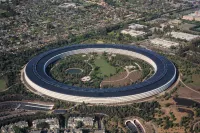
Apple Inc founded in and headquartered in Cupertino California is...
TikTok also known as Douyin in China is a social...

Basketball is a team sport played on a rectangular court...
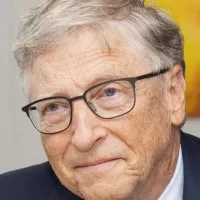
Bill Gates an American businessman and philanthropist revolutionized personal computing...

Donald John Trump is an American politician media personality and...
Xbox is a video gaming brand owned by Microsoft Gaming...
Trending
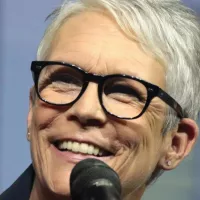
9 minutes ago Jamie Lee Curtis shares My Girl memories and appreciates young actors' impact throughout the years.

9 minutes ago Dave Coulier Shares Health Update After Cancer Battle: Details on His Recovery

9 minutes ago Chris Pratt and Anna Faris share friendly hug during Thanksgiving reunion years after divorce.

7 months ago Dollywood's Spring Flower and Food Festival blooms; Dolly Parton tribute highlights park events.

10 minutes ago Emma Willis shares update on Bruce Willis and deems Die Hard a Christmas film.

1 hour ago Callum Turner: Rising Star and New Favorite for the Coveted James Bond Role
Popular
Aftyn Alyssa Behn is an American politician currently serving as...
Matt and Ross Duffer known as the Duffer Brothers are...

XXXTentacion born Jahseh Dwayne Ricardo Onfroy was a controversial yet...

Stranger Things created by the Duffer Brothers is a popular...

Lane Kiffin is an American football coach currently serving as...
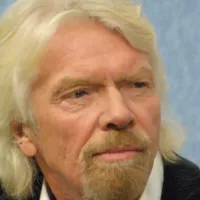
Richard Branson is a prominent English business magnate best known...
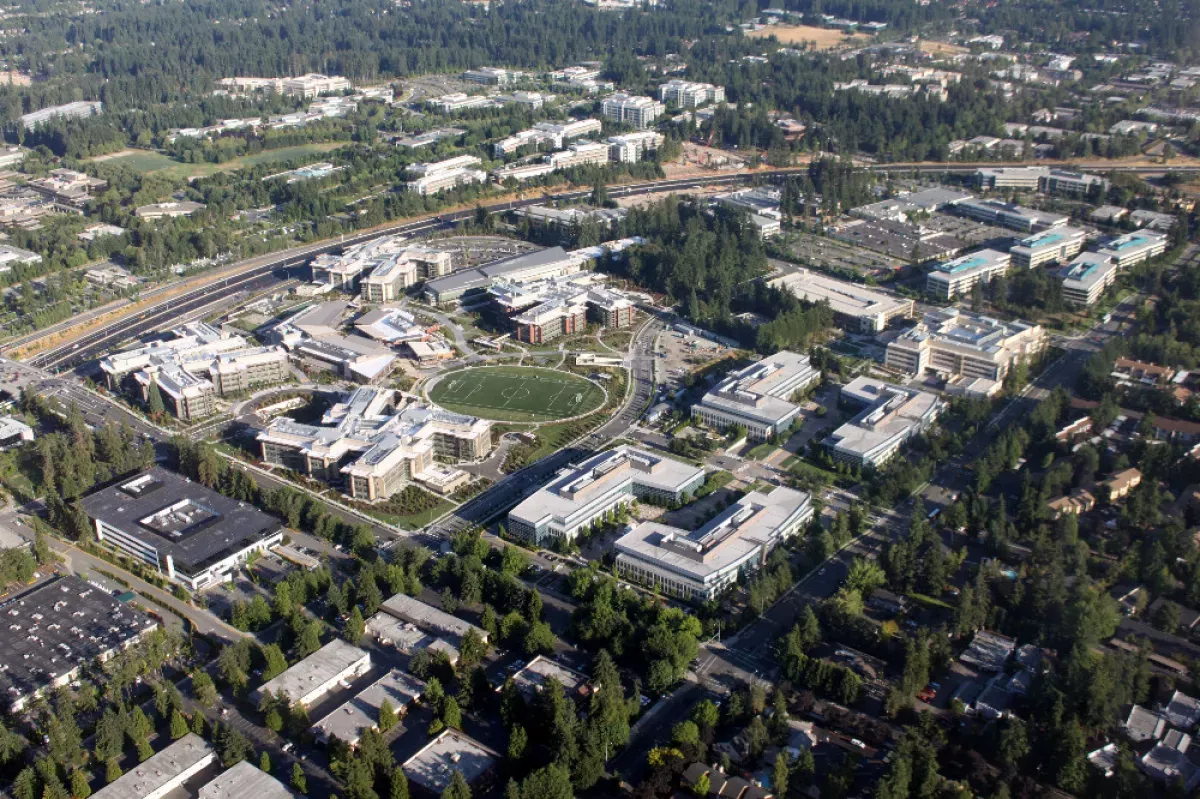



 Microsoft Xbox One Kinect Sensor Bar [Xbox One](Renewed)](https://m.media-amazon.com/images/I/21EmpEz+OeL._SL500_.jpg)

